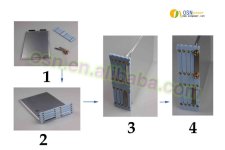cal3thousand
10 MW
arkmundi said:Nonsense! The only reliable evidence of usage is actual usage. Its used a lot in the electronics field these days. I'm sure there are some shit brands out there, but not the one I linked to, which has a silver metal embed. The accurate way to determine resistance, if that's a concern, is to actually measure it with a multimeter. Since it would be a micro-thin layer, there would I expect be very little resistance measured. There would be a film of silver particles and epoxy particles, so many, many channels, electrical and adhesive. When I get around to building a 18650 cell pack, I'm going to experiment around with a design that yields both the electrical and strength properties I desire, so will report MY actual experience. Best.
Youre right about the usage part. So when you build that pack, measure the pack resistance and let us know how you do. :wink:


